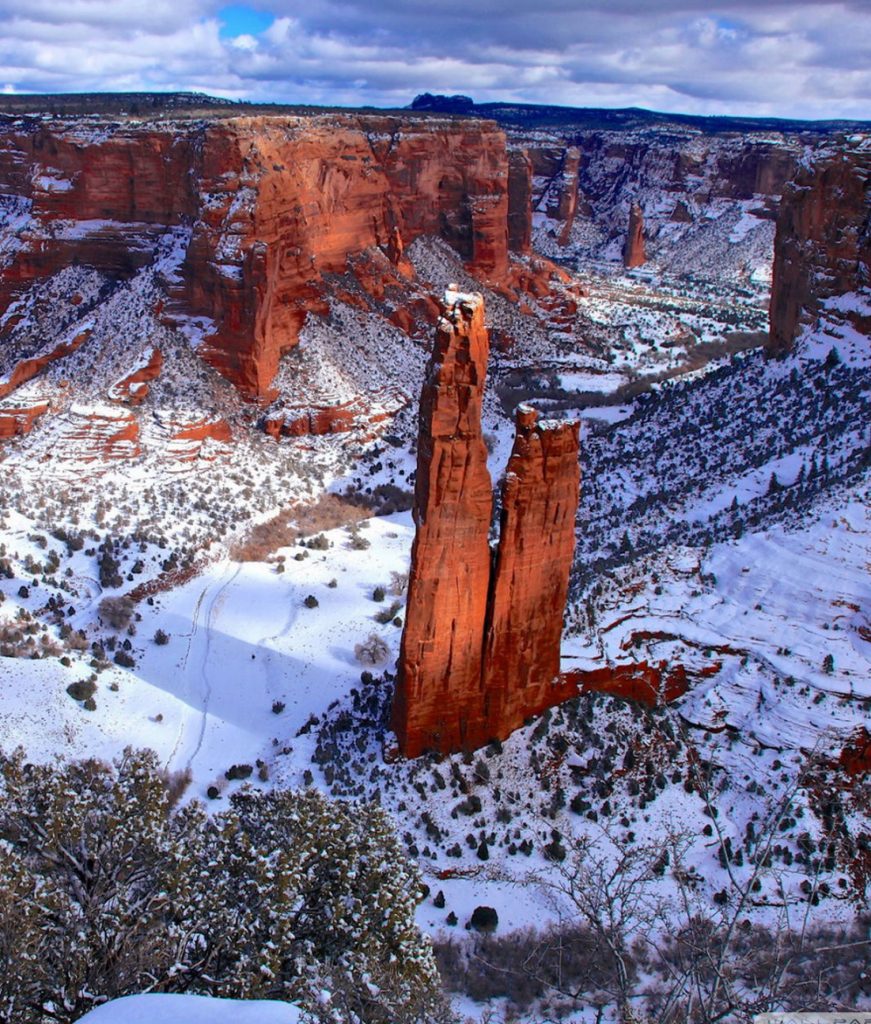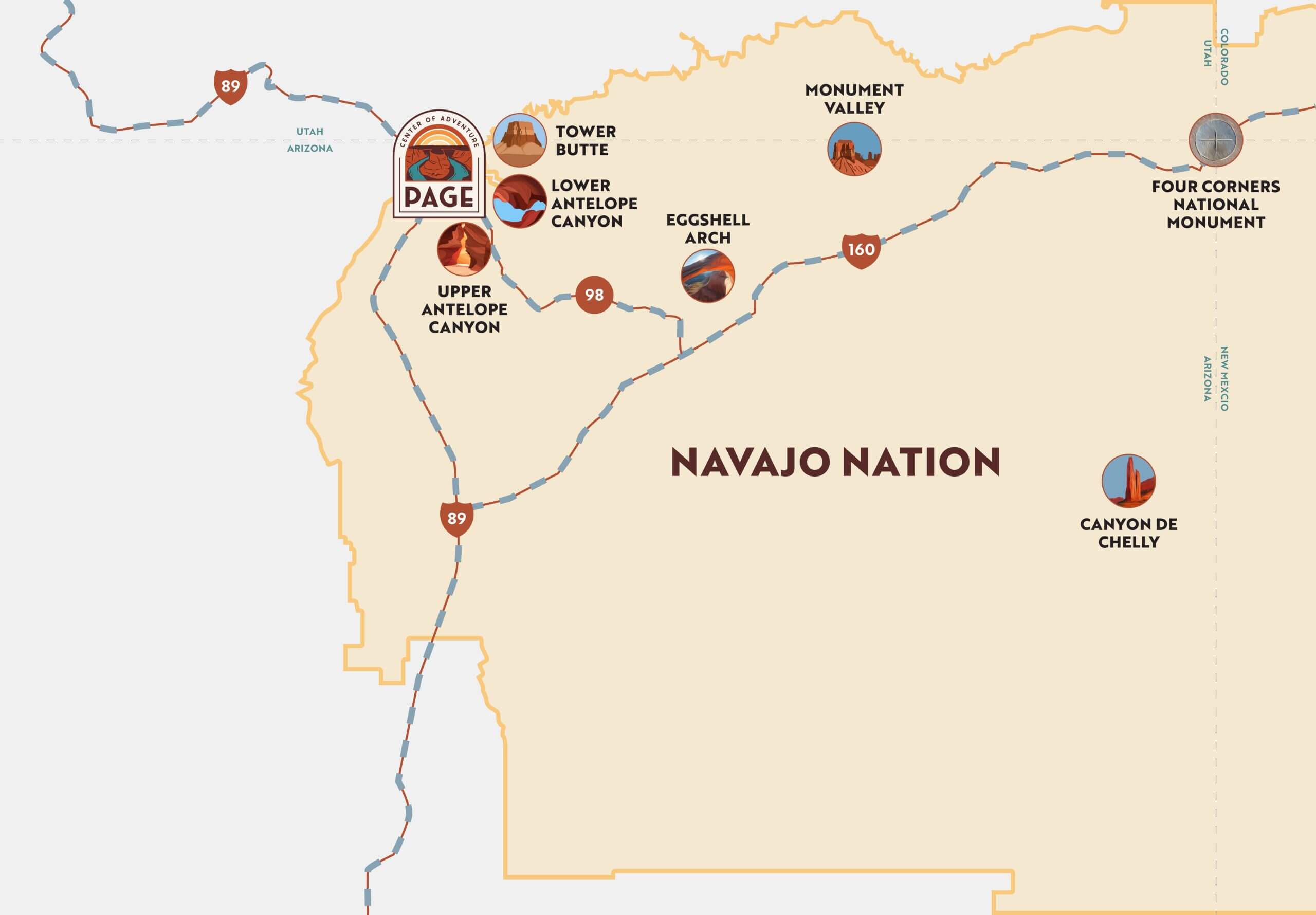
The Navajo Nation: A Journey Through Sacred Lands and Enduring Culture in Arizona
Beyond the iconic red rock mesas and slot canyons that define the American Southwest, lies a profound and living landscape – the Navajo Nation. Spanning over 27,000 square miles across Arizona, Utah, and New Mexico, it is the largest Native American reservation in the United States, a sovereign territory rich in history, breathtaking natural beauty, and a vibrant culture that beckons intrepid travelers. For visitors to Arizona, a journey into the Navajo Nation is not merely a sightseeing trip; it is an immersive experience, a privileged glimpse into a world shaped by ancient traditions, resilience, and an unbreakable connection to the land.
The Navajo Nation, or Diné Bikéyah as it is known in the Navajo language (Diné Bizaad), offers a unique tourism proposition. Unlike many commercialized destinations, tourism here is deeply intertwined with cultural preservation, economic empowerment for its people, and a profound respect for the sacredness of the land. It’s a place where every vista tells a story, and every interaction offers a lesson in enduring heritage.
Monument Valley: Where Earth Touches Sky
Perhaps the most universally recognized symbol of the Navajo Nation is Monument Valley Navajo Tribal Park. Straddling the border of Arizona and Utah, this majestic landscape of towering sandstone buttes, mesas, and pinnacles has been immortalized in countless Western films, most notably by director John Ford. Driving the 17-mile scenic loop, visitors are dwarfed by formations like the Mittens, Merrick Butte, and Totem Pole, their silhouettes shifting dramatically with the sun’s passage.
However, Monument Valley is far more than a cinematic backdrop. For the Navajo people, these formations are not merely geological wonders but living entities, imbued with spiritual significance and woven into their creation stories. "These are our ancestors, our protectors," explains Elsie Mae Begay, a Navajo elder whose family has lived in the valley for generations. "When you look at them, you’re not just seeing rock; you’re seeing history, you’re seeing spirit." Guided tours, often led by local Navajo families, offer deeper insights, leading visitors to areas inaccessible to private vehicles and sharing ancestral tales and the traditional uses of the land. Here, the landscape itself becomes a storyteller, echoing the voices of generations.

Antelope Canyon: A Cathedral of Light and Stone
South of Monument Valley, near Page, Arizona, lies another natural marvel that has captivated the world: Antelope Canyon. Divided into Upper and Lower sections, these slot canyons are a masterpiece of erosion, carved over millennia by flash floods. Their smooth, undulating sandstone walls glow with an ethereal light, shifting in color from deep oranges and reds to soft purples and blues as the sun’s rays filter through the narrow openings above.
Access to Antelope Canyon is strictly controlled and must be accompanied by a Navajo guide – a crucial aspect of Navajo tourism that ensures safety, protects the fragile environment, and provides economic opportunities for the local community. Guides like Kenneth Begay, a seasoned canyon explorer, not only navigate the sometimes challenging terrain but also share the canyon’s spiritual significance. "We call this place ‘Tsé Bighánílíní,’ which means ‘the place where water runs through rocks,’" Begay says. "It’s a sacred place of healing and reflection for us. We ask visitors to respect its power and beauty." The experience is almost spiritual, with the play of light and shadow creating an ever-changing, almost living, artwork.
Canyon de Chelly: A Living History
Further east, near Chinle, Arizona, Canyon de Chelly National Monument offers a different kind of immersion. Co-managed by the Navajo Nation and the National Park Service, Canyon de Chelly is a profound blend of natural wonder and human history. Its sheer sandstone walls, rising up to 1,000 feet, shelter ancient cliff dwellings of the Ancestral Puebloans (Anasazi) dating back over a thousand years, such as White House Ruin.
What makes Canyon de Chelly truly unique is that the canyon floor remains home to Navajo families who continue to farm and herd sheep, much as their ancestors did. This is not a museum; it is a living landscape. Visitors can drive along the rim to various overlooks for panoramic views, but to enter the canyon floor, a Navajo guide is mandatory. These guides provide invaluable context, sharing stories of the canyon’s deep history, the resilience of the Navajo people through challenging times (including the Long Walk), and their continued stewardship of this sacred place. It’s a powerful reminder that history is not just in books, but in the enduring presence of people on their ancestral lands.
Beyond the Iconic: Cultural Immersion and Economic Empowerment
While these natural wonders are undoubtedly the main draw, the true heart of Navajo Nation tourism lies in its rich cultural offerings. The Diné people are renowned for their intricate artistry and craftsmanship. Visitors can explore trading posts and art markets in towns like Window Rock (the capital of the Navajo Nation) and Gallup (just off the reservation), finding exquisite examples of Navajo weaving, silver and turquoise jewelry, pottery, and sand paintings. Each piece tells a story, reflecting the artist’s connection to their heritage and the land.
"Our rugs are more than just blankets; they are prayers woven into wool," explains Sarah Chee, a weaver from Ganado. "Every design, every color, has meaning. When you buy a rug from a Navajo weaver, you’re taking a piece of our culture, our spirit, home with you." These direct sales are vital for supporting families and preserving traditional skills that have been passed down for generations.

Food also plays a significant role. Traditional Navajo cuisine, centered around staples like corn, beans, and squash, offers a delicious insight into the culture. Iconic fry bread, often served with honey or as a "Navajo Taco" topped with beans, meat, and vegetables, is a must-try. Many roadside stands and small restaurants offer authentic meals, providing another avenue for cultural exchange and economic support.
Challenges and the Path Forward: Balancing Tradition with Modernity
Navajo Nation tourism, while thriving, faces its unique set of challenges. Infrastructure, particularly in remote areas, can be limited, with services and road quality varying. The sheer size of the Nation also means that attractions are often spread far apart, requiring careful planning.
Furthermore, there is a constant effort to balance the desire for economic growth through tourism with the need to protect sacred sites, preserve cultural integrity, and ensure that the benefits genuinely reach the local communities. The Navajo Nation government, through its Department of Tourism, is actively involved in promoting sustainable and respectful tourism practices. They emphasize the importance of visitors adhering to local customs, respecting privacy, and understanding that they are guests on sovereign land.
"We welcome visitors to our beautiful land, but we ask them to come with an open heart and a respectful mind," says Myron Lizer, former Vice President of the Navajo Nation. "This is not just a place to take pictures; it is a place to learn, to connect, and to understand our way of life."
The recent COVID-19 pandemic also highlighted the vulnerability of tourism-dependent communities. The Navajo Nation experienced one of the highest per-capita infection rates in the early stages of the pandemic, leading to strict lockdowns and the temporary closure of many tourist sites to protect its elders and vulnerable populations. This period was a stark reminder of the Nation’s resilience and its commitment to community well-being above all else. As sites have cautiously reopened, there’s an even greater emphasis on health, safety, and responsible visitation.
A Call to Experience and Understand
A visit to the Navajo Nation is more than just a vacation; it is an educational and often transformative experience. It’s an opportunity to witness the enduring spirit of a people who have maintained their language, traditions, and deep connection to their homeland despite centuries of challenges. It’s a chance to walk on sacred ground, to marvel at landscapes that inspire awe, and to engage with a culture that enriches the tapestry of America.
As the sun sets over the vast expanse of the Navajo Nation, casting long shadows across the mesas and painting the sky in fiery hues, one can’t help but feel a profound sense of peace and wonder. It’s a reminder that some of the most extraordinary journeys are not just about where you go, but about whose stories you hear, and how those stories change you. The Navajo Nation stands ready to share its stories, inviting the world to experience the magic and majesty of Diné Bikéyah.

